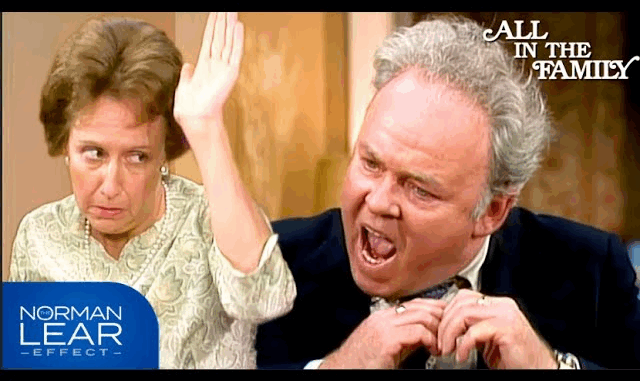
When All in the Family first aired in 1971, it was a groundbreaking experiment—one that would forever alter the landscape of American television. Norman Lear’s sitcom was not just a comedy; it was a provocative commentary on the issues shaping America at the time. It was unafraid to tackle the complexities of social and political divides, offering a new model for how television could be both entertaining and socially responsible.
Prior to All in the Family, sitcoms were largely escapist. Shows like Leave It to Beaver and The Andy Griffith Show painted idealized, often sanitized versions of American family life. These programs reflected a conservative, post-WWII vision of the American Dream, and for the most part, avoided serious political or social topics.
But All in the Family shattered that formula. From its very first episode, it positioned itself as a show that would confront the tough issues head-on. The character of Archie Bunker, played by Carroll O’Connor, became a symbol of the tension between traditional values and the rapidly changing social landscape of the 1960s and 1970s. Archie’s bigoted, conservative views were often the butt of the joke, but the way his character was written allowed for nuanced conversations about race, gender, class, and politics.
What made the show so revolutionary was its ability to balance comedy with social critique. All in the Family didn’t shy away from topics like racism, the Vietnam War, women’s rights, and LGBTQ+ issues—subjects that were often considered too controversial or taboo for mainstream television. Through Archie’s constant clashes with his liberal son-in-law, Michael, and the emotional support offered by his wife Edith, the show explored these contentious issues with humor, intelligence, and depth.
The show’s impact wasn’t just cultural; it had real-world effects on the way other programs approached social issues. All in the Family opened the door for a new breed of television shows, which dared to address political and social matters head-on. Shows like Maude, The Jeffersons, and Good Times followed in its footsteps, exploring race, class, and gender in ways that had never been seen before on television.
Perhaps one of the most significant achievements of All in the Family was the way it made politics and social issues relatable to the average American. It didn’t just present left-wing or right-wing views in isolation; it placed them in the context of family life, where personal relationships could clash with political ideologies. This created a framework where discussions about controversial issues became not only acceptable but necessary. All in the Family normalized the idea of wrestling with difficult subjects within a family setting, offering audiences both humor and reflection.
Today, the influence of All in the Family is still felt across television. Its unflinching approach to difficult topics paved the way for later programs like The West Wing, The Simpsons, and South Park, which similarly blend humor with a critique of American society. Moreover, its legacy continues in more recent shows like Black-ish and The Conners, which balance family dynamics with sharp social commentary.
Ultimately, All in the Family remains a landmark in television history not just because it was funny, but because it dared to use humor as a weapon for social change. It was the first show to prove that television could be more than just entertainment—it could be a platform for engaging with the pressing issues of the day, provoking thought, and challenging audiences to examine the world around them.
